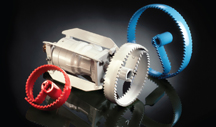
Interested in Plumbing?
Get Plumbing articles, news and videos right in your inbox! Sign up now.
Plumbing + Get AlertsRoot cutting jobs are tricky, and savvy contractors need a variety of cutting tools to tackle the toughest jobs.
“Anybody who says they’re a true expert in root removal is probably exaggerating, because each situation is unique,” says David Bradford, product manager at Shamrock Pipe Tools, Inc. of Baton Rouge, La., a manufacturer and distributor of pipe cleaning tools.
Regardless of root type, Bradford says that the first order of business is to re-establish water flow.
“You might buy some time using chemicals to remove the root, but it’s like sending the root fairy down the pipe and hoping for a miracle,” he says. “Roots will grow back eventually.”
Selection is key
 Bradford recommends saws and cutters as a first line of offense. A waterjet root cutter that drives a circular saw blade using hydraulic power is the most common tool, but choice of blade attachment is important.
Bradford recommends saws and cutters as a first line of offense. A waterjet root cutter that drives a circular saw blade using hydraulic power is the most common tool, but choice of blade attachment is important.
“It’s best to select a blade that’s slightly smaller than the pipe diameter to get through pipe offsets and deflections,” he says.
Bradford recommends small pipe hydraulic blade root cutters for pipes three to 10 inches in diameter and water jet root cutters for pipes six to 18 inches in diameter. He notes that simple tempered metal blades of alloy steel or carbon steel provide enough cutting power to get through the toughest roots.
Contractors can choose from flat blades and concave blades that feature a slight indentation. “I prefer concave blades, because they offer smaller surface wear against the pipe wall,” he says.
Once the center of the pipe is clear of obstruction, Bradford says a chain cutter excels at cleaning pipe walls and cutting fine root hairs around the circumference.
A cable rooter, which uses metal cables to scrape the full diameter of the pipe in combination with a front cutter, can also remove grease, scale, debris and roots from smaller-diameter cast iron and storm sewer pipes.
Let the tool do the work
“Don’t force the cutter, ” Bradford says. “Get to the blockage at as low an angle as possible, with a slow and steady approach and you’ll have the power to penetrate the root mass. Use a lower RPM and let the tool do the cutting.
“Don’t be a cowboy. If you progress too quickly at first, you may not be able to pull back. Do manageable chunks of 20 to 40 feet at a time. It’s a lot easier than retrieving a tool stuck 100 feet down.”
Nozzles alone can flush out some grime and root debris in a pinch. “But I’m not convinced a nozzle is an effective cutting tool,” he says. “Some proponents of nozzle cutters look at me like I’m from the Stone Age, but if you’re in a 15-inch line and using a nozzle, it loses impact almost immediately after entering the pipe.
“Better to use the nozzle to clean away grit that might cause premature wear on the blades and damage high-torque motors that can jam up with sand.”
While contractors might be forced to deal with a wide variety of root intrusions, a disciplined approach can handle the toughest jobs.
Bradford says, “It’s a combination of creativity and choosing the right tool for the job.”






